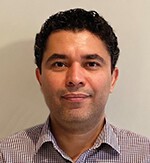The digital transformation that began several years ago continues to grow and evolve. With new advancements in data analytics and machine-learning algorithms, field developers today see more benefits to upgrading their traditional development work flows to automated artificial-intelligence work flows. The transformation has helped develop more-efficient and truly integrated development approaches. Many development scenarios can be automatically generated, examined, and updated very quickly. These approaches become more valuable when coupled with physics-based integrated asset models that are kept close to actual field performance to reduce uncertainty for reactive decision making.
In unconventional basins with enormous completion and production databases, data-driven decisions powered by machine-learning techniques are increasing in popularity to solve field development challenges and optimize cube development. Finding a trend within massive amounts of data requires an augmented artificial intelligence where machine learning and human expertise are coupled.
With slowed activity and uncertainty in the oil and gas industry from the COVID-19 pandemic and growing pressure for cleaner energy and environmental regulations, operators had to shift economic modeling for environmental considerations, predicting operational hazards and planning mitigations. This has enlightened the value of field development optimization, shifting from traditional work-flow iterations on data assimilation and sequential decision making to deep reinforcement learning algorithms to find the best well placement and well type for the next producer or injector. Operators are trying to adapt with the new environment and enhance their capabilities to efficiently plan, execute, and operate field development plans. Collaboration between different disciplines and integrated analyses are key to the success of optimized development strategies.
These selected papers and the suggested additional reading provide a good view of what is evolving with field development work flows using data analytics and machine learning in the era of digital transformation.
This Month’s Technical Papers
Machine-Learning Approach Optimizes Well Spacing
Reinforcement Learning Enables Field-Development Policy Optimization
Generative Well-Pattern Design Presents Opportunities To Reduce Drilling Expenditures
Recommended Additional Reading
SPE 203073 Data-Driven and AI Methods To Enhance Collaborative Well Planning and Drilling-Risk Prediction by Richard Mohan, ADNOC, et al.
SPE 200895 Novel Approach To Enhance the Field Development Planning Process and Reservoir Management To Maximize the Recovery Factor of Gas Condensate Reservoirs Through Integrated Asset Modeling by Oswaldo Espinola Gonzalez, Schlumberger, et al.
SPE 202373 Efficient Optimization and Uncertainty Analysis of Field Development Strategies by Incorporating Economic Decisions in Reservoir Simulation Models by James Browning, Texas Tech University, et al.

Reza Garmeh, SPE, is a reservoir engineer adviser working for Callon Petroleum. He has more than 10 years of experience in the oil and gas industry. Garmeh’s expertise includes reservoir modeling and simulation studies for unconventional and conventional resources, field development planning, well-performance optimization, design and modeling of enhanced oil recovery, phase behavior, and decline curve and rate transient analysis. He has experience working in various integrated reservoir studies and with field development planning internationally. Garmeh holds a PhD degree in petroleum engineering from The University of Texas at Austin and is a member of the JPT Editorial Review Committee.

